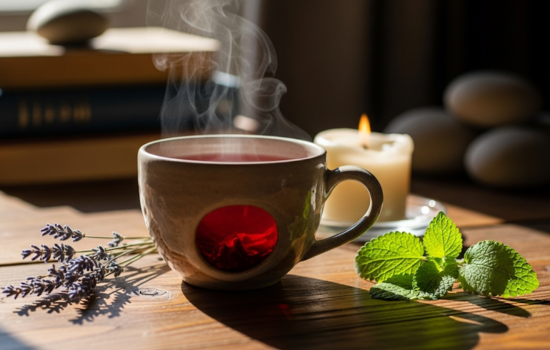Advertisements
Feeling disconnected, burned out, or simply out of your depth? You're not alone. In times when everything is moving fast, finding balance seems like a distant goal. But there are simple and natural ways to get back on track. One of them starts with a warm cup of tea: tea as a tool for harmony.
This article isn't about miracle cures, but rather about how to use tea to help you regain your internal rhythm. Because balance doesn't always require big changes. Sometimes, it just requires consistency, intention... and a good brew.
Advertisements
Why seek balance with tea?
The body craves rest. The mind demands silence. But between meetings, notifications, and commitments, we tend to ignore those signals… until symptoms appear: constant fatigue, insomnia, anxiety, lack of focus, irritability, or a feeling of emptiness.
He Natural Balance with Tea It offers a gentle, non-invasive, and easy-to-apply alternative. It uses adaptogenic, relaxing, and harmonizing plants to help you restore your energy, slow down, and reconnect with yourself.
Advertisements
See also
- Natural Balance with Tea
- Body Tea: Free yourself from pain
- The Best Apps for Creating Your Family Tree
- Palm Reading Apps: Discover Your Future in Your Palm
- The Best Apps for Monitoring WhatsApp
What is the purpose of Natural Balance with Tea?
- Regulate the nervous system and reduce anxiety
- Improve sleep quality and concentration
- Support vital energy without overstimulating
- Accompanying moments of emotional or physical changes
- Create healthy routines with natural anchors
And all this without chemicals or heavy side effects.
Key plants to finding balance
A good tea that seeks to create balance must address the physical and emotional aspects simultaneously. These are some of the most commonly used herbs in functional blends:
Ashwagandha
An adaptogenic root that helps regulate cortisol and stabilize mood. Ideal for prolonged stress or nervous fatigue.
Rooibos
Caffeine-free, high in antioxidants, and gently relaxing. Provides balance without sedation.
Licorice (licorice root)
It helps modulate the endocrine system, maintain stable blood pressure, and strengthen the adrenal glands. It's important not to overindulge.
Melissa (lemon balm)
It relaxes the central nervous system, improves emotional digestion and helps find mental peace.
Mint
Refreshes and clears the mind. Combined with other plants, it provides a feeling of mental lightness.
Lavender
Its aroma and properties help calm repetitive thoughts, nervousness and physical tension.
Who can benefit from Natural Balance with Tea?
Anyone who feels they need downshiftPeople who are overstimulated, suffer from mild burnout, are experiencing intense emotional processes, or have disordered habits. It is also useful for those who are resuming self-care after difficult periods.
Your age doesn't matter. Your intention matters.
And how to start?
Start with a cup a day. It can be in the afternoon, when your body needs a break. Or at night, to end the day more serenely. Others drink it in the morning if they feel anxiety starting as soon as they open their eyes.
The key point: turn that moment into a small ritual. No screen. No running. Just you and your tea. Breathe. Feel. Listen.

Are all teas good for balancing?
No. Many commercial teas promise “harmony” but are loaded with flavorings, have minimal doses of active plants, or combine ingredients that have no functional meaning. Therefore, in the Part 2 I'm going to show you three real and effective options:
- A homemade adaptogenic blend
- Herbal formulas with a calming base
- Commercial teas that seek to balance body and mind
With their advantages, limitations, and a comparison table to help you choose.
Would you like to start taking care of yourself without complications or excesses?
So stay with me. In the next part, I'll show you how to prepare and choose the perfect tea for your needs and lifestyle.
